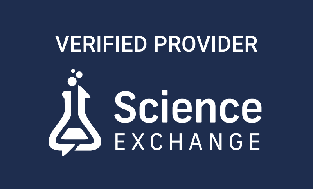Since the passage of the FDA Modernization Act 2.0 in December 2022, there has been a rapid acceleration in the development of NAMs or New Approach Methodologies. NAMs cover a broad range of technologies including in silico drug design, cell-based in vitro assays and next-generation rodent models. The development of NAMs has been accelerated by key macrotrends such as favorable legislation, increased societal pressures and significant scientific and technological improvements. Regulatory agencies in the US and Europe are continuing to make significant investments in the development of NAMs. These include increased funding1and the passage of legislation to incentivize drug developers to use in vitro assays to evaluate the safety and toxicity of new therapies2. Social media platforms are playing a critical role in spreading awareness about animal use in preclinical drug development and this has spurred biotech and pharma companies to be more thoughtful on using animals in preclinical efficacy and toxicology studies. However, one challenge with social media is that misinformation and inaccurate data are easily spread, so it is essential for the scientific community to continue to share educational information with the general public. While there are many reasons to use non-animal models and platforms for evaluating new therapies, it is important to make sure that these methods are equivalent or superior to animal models, and that the datasets are large enough to identify statistically significant effects of therapeutics. While some studies such as systemic PK/PD and ADME are currently conducted in in vivo models and would be very difficult to replace with in vitro models, there are a few groups working on very complex multi-organ microphysiological systems (MPS) linked with precision microfluidics3 that could replace in vivo models in the future.
In vitro models cover a broad range of platforms thar range from simple 2D cultured cell lines complex multi-organ MPS. In vitro models have several advantages over animal models including being all human, which eliminates species variability issues and a controlled testing environment, which reduces data variability. However, in vitro platforms have limitations including the inability to reproduce systemic effects or highly complex biologic processes and limited timelines that may not allow for longitudinal studies. Since each platform has unique pros and cons, it is essential for drug developers to elucidate the context of use and identify the experiment objective. Once the objective is clear, then the appropriate model or platform can be identified and established. At first glance, it seems that the more complex in vitro model systems (MPS) would be the optimal choice for most studies, as they are highly translational, but MPS systems have high costs, long timelines and complex workflows.
Typically, in vitro models work well when there are a small or moderate number of clearly defined endpoints. One such example is screening candidates identified in high throughput screens (HTS) that can reverse or halt loss of neuronal function in neurodegenerative diseases. A platform of choice would be using human induced pluripotent stem cells that are differentiated into various neuron types combined with an electrophysiological readout measured using multi-electrode arrays (MEA). Another example of context of use is genotoxicity assessment where the ability of new therapies to damage DNA is assessed using well-established endpoints such as the micronucleus and COMET assays. Traditionally, genotoxicity assays use animal models and different tissues including liver and blood cells are tested for DNA damage. The in vivo genotoxicity assays are in the process of being replaced with a battery of cell-based assays with established endpoints like the micronucleus and COMET assays. A controlled in vitro system is also suitable for the development of new endpoint assays like whole genome sequencing to assess global mutational changes and DNA damage. These are a couple of examples of the context of use for specific in vitro assays and as the drug development community continues to develop NAMs, we can expect to see more clearly defined contexts of use to answer specific scientific questions.
References:
1https://euro-funding.com/en/blog/drug-development-projects-european-funds/
2https://mgaleg.maryland.gov/mgawebsite/Legislation/Details/sb0560?ys=2023RS
3https://www.draper.com/business-areas/biotechnology-systems/organ-on-a-chip#


